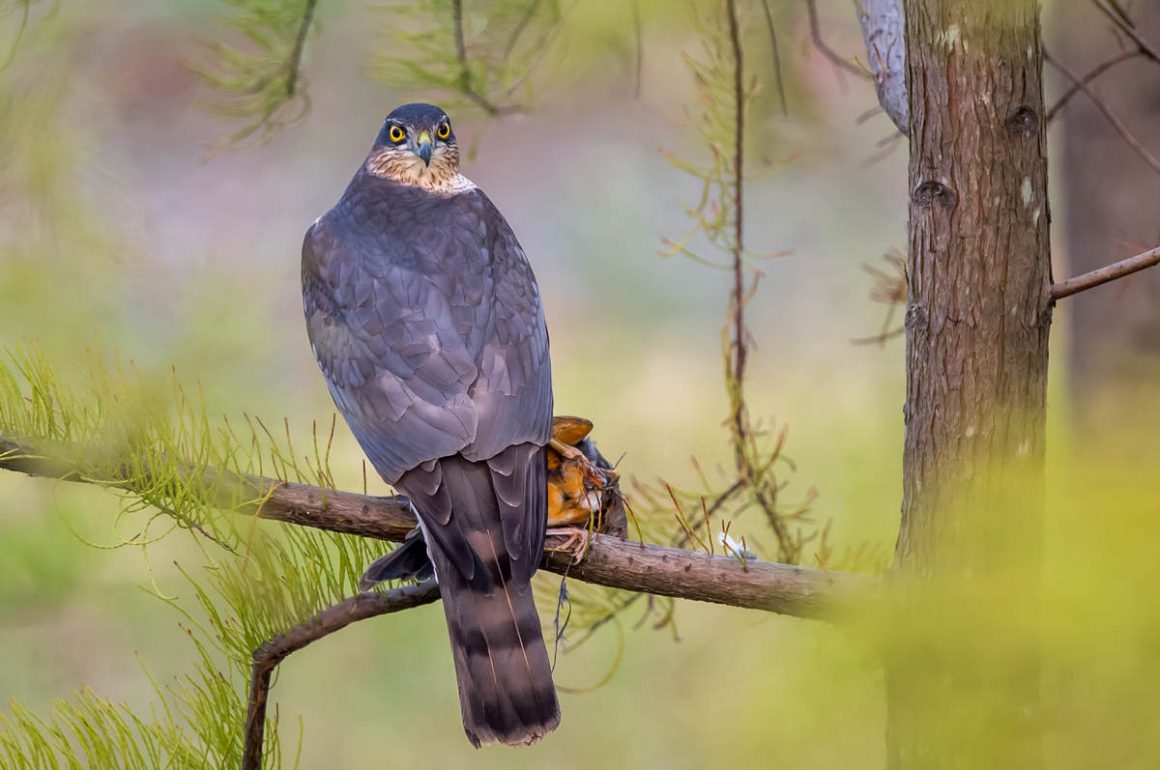
Somehow, it seems that most birders regularly visiting Nanhui feel that 2021 was a bit of a disappointing year. Not too many highlights, not too many species … hard to say whether this is just the usual nostalgia for a better but probably nonexistent past or a real phenomenon. The latter is possible, as the undisturbed areas of Nanhui keep shrinking, leaving less and less space for birds.
Still, going there can still be rewarding, particularly very early in the morning. This November, I saw my first ever Eurasian Sparrowhawk in Shanghai (Japanese and Chinese Sparrowhawk both seem to be more common). The sparrowhawk I saw was just having breakfast, which seems to have been some kind of thrush. Tasty.
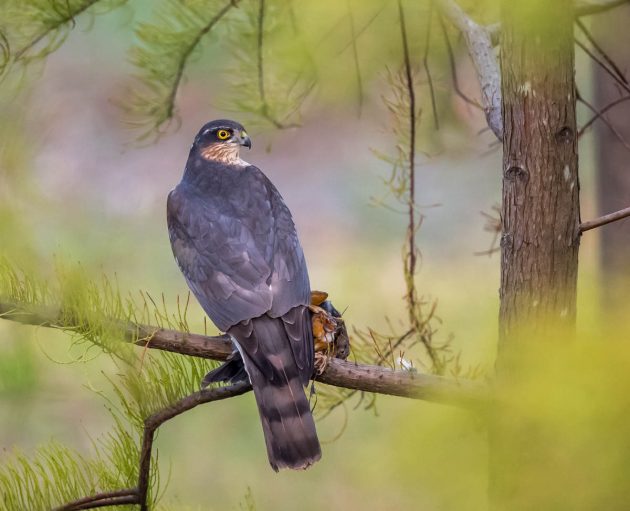
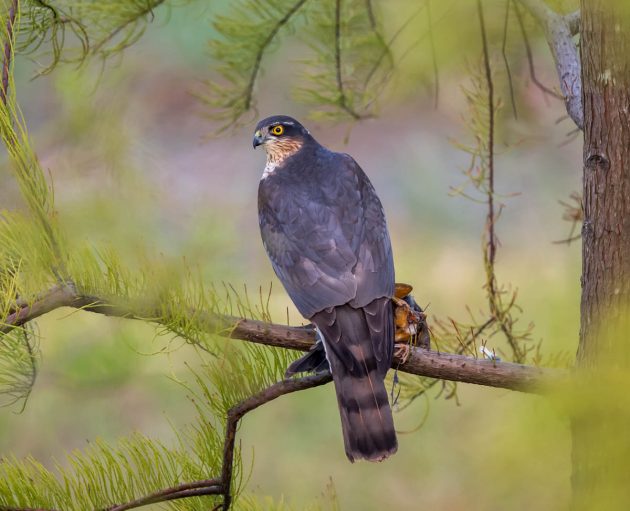
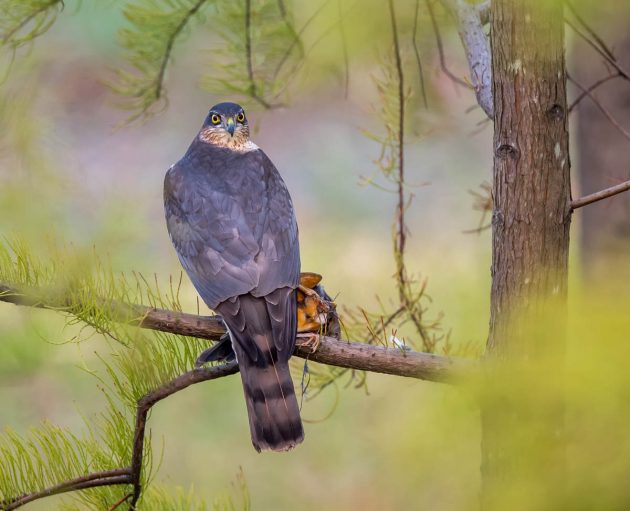
A few days later, I saw a Eurasian Sparrowhawk again, at the exact same space, so possibly the same individual but now with substantially bigger privacy concerns.
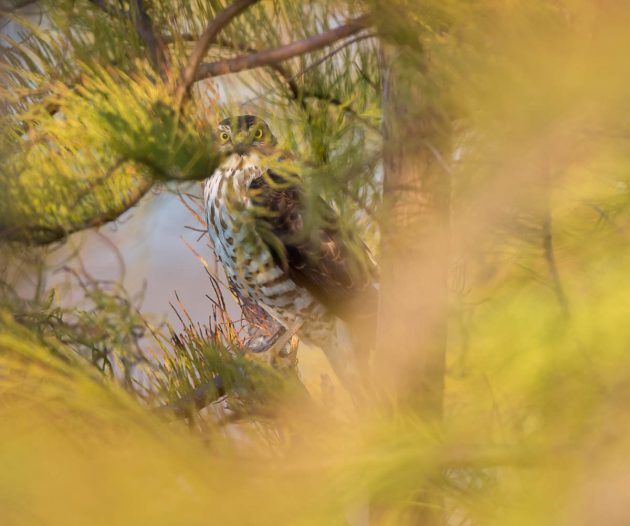
A local Long-tailed Shrike had a slightly different diet.
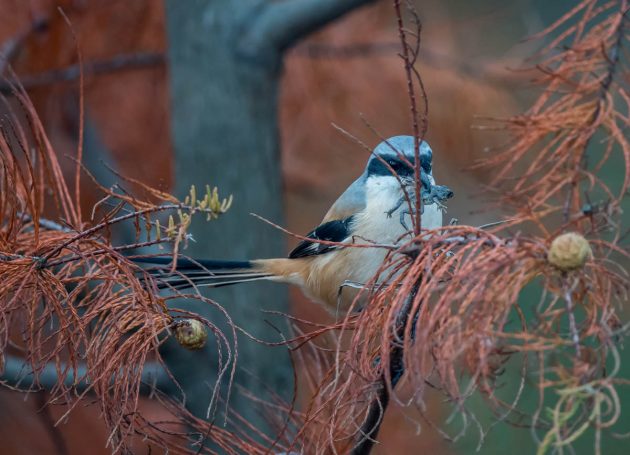
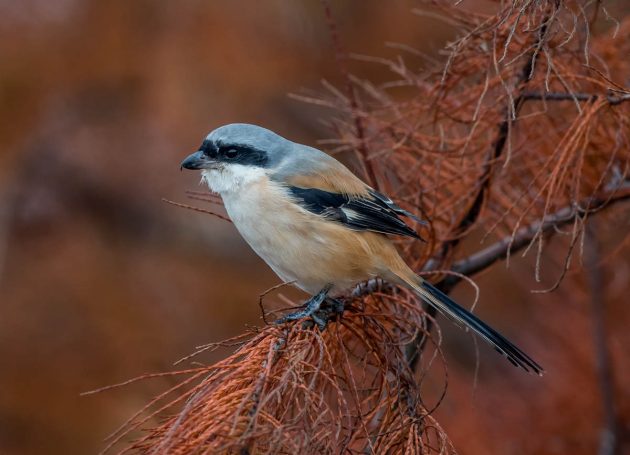
In early November, Yellow-breasted Buntings were still relatively easy to see, only to be gone a bit later in the month. Their strong presence here at Nanhui in combination with their highly threatened status should be a good argument to protect Nanhui better. But as The Smiths once said in a compilation album title, “The World Won’t Listen”.
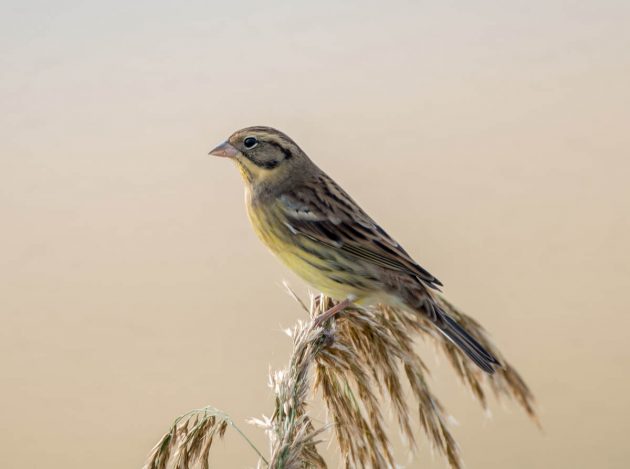
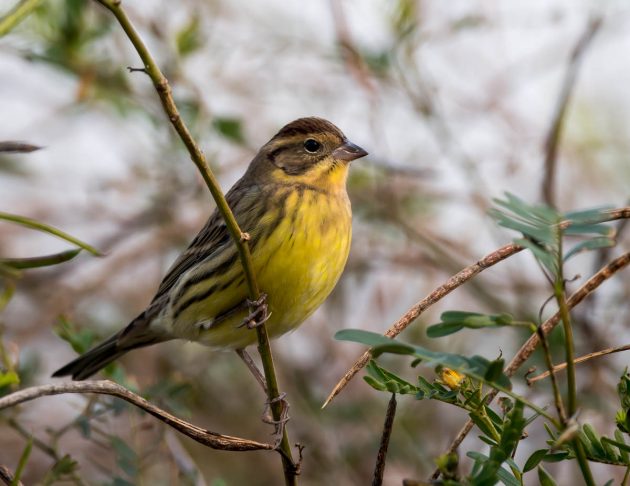
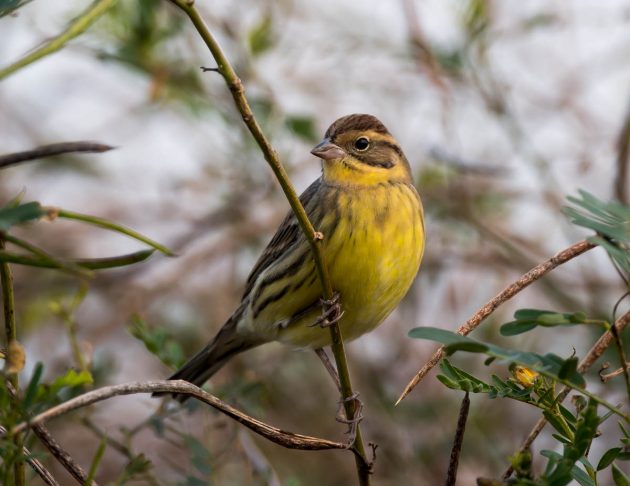
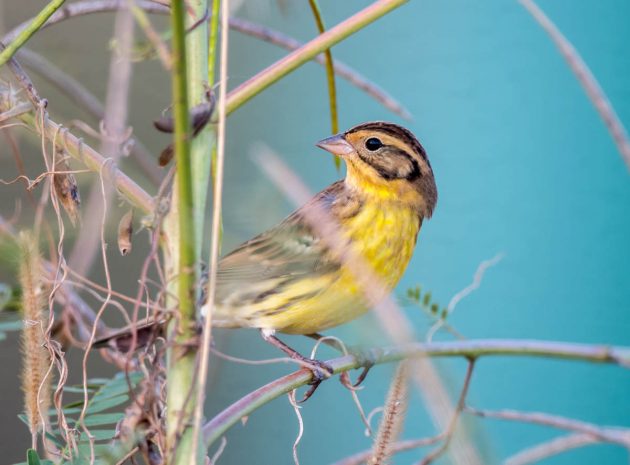
It almost seemed like they were replaced by Rustic Buntings, though they prefer slightly different habitats. This species is listed as vulnerable – similar to the Yellow-breasted Buntings, it is trapped on a large scale. Humans, you ought to be ashamed of yourselves.
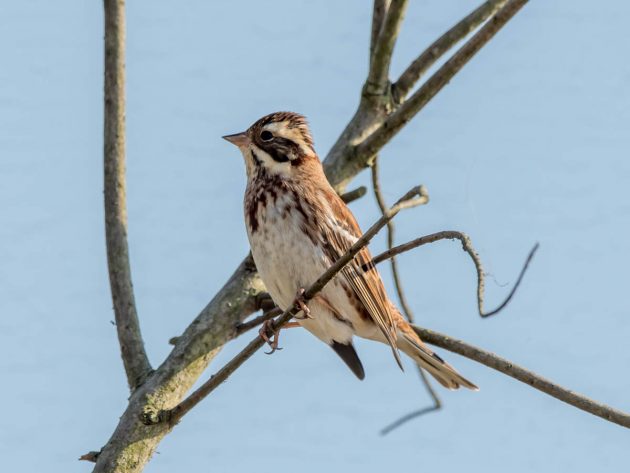
For some reason, the indeed rather rustic patterns of the Rustic Bunting remind me of these Norwegian fishermen sweaters which were popular at some point in the past, at least in certain semi-alternative circles. I have to say that the pattern suits the buntings much better than humans, though, and hopefully, it is also more pleasant for them to wear.
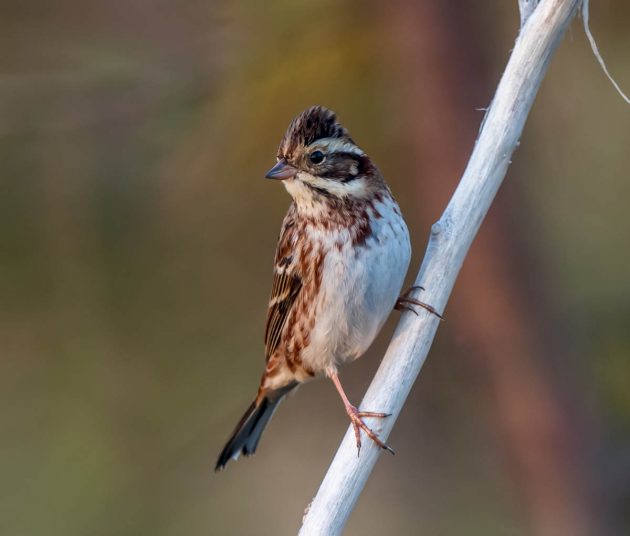
Moving to the less threatened buntings, the Black-faced Bunting is quite common in Shanghai in winter. I have probably remarked on the difference between the English name (black-faced) and the Chinese one (huitouwu, “grey-headed bunting”). What I had not realized before is that the Latin name, Emberiza spodocephala, actually is aligned with the Chinese but not with the English one. According to Wikipedia, “The specific spodocephala is from Ancient Greek spodos, “ashes”, and kephalos, “headed”. I do not mind much if you think I am a nerd.
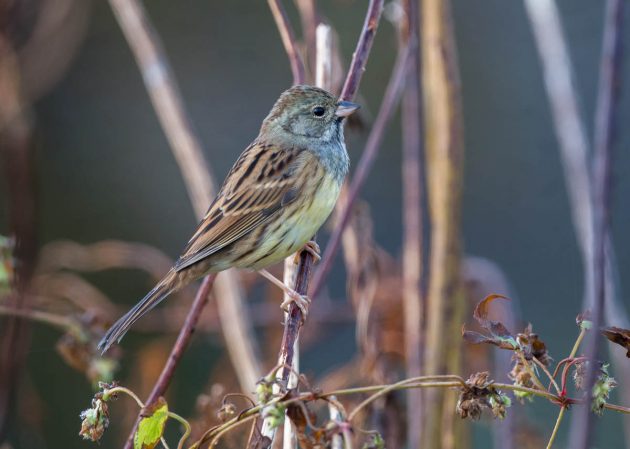
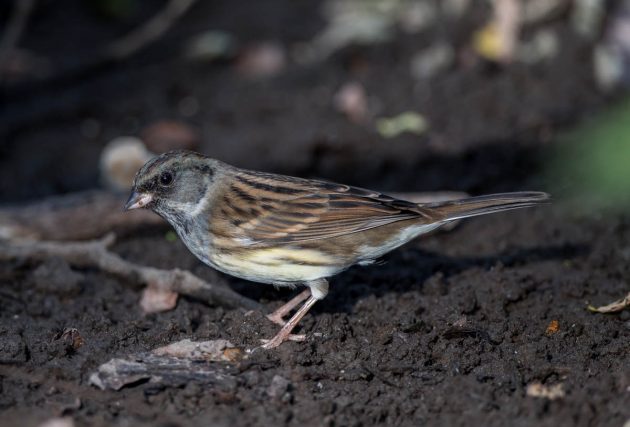
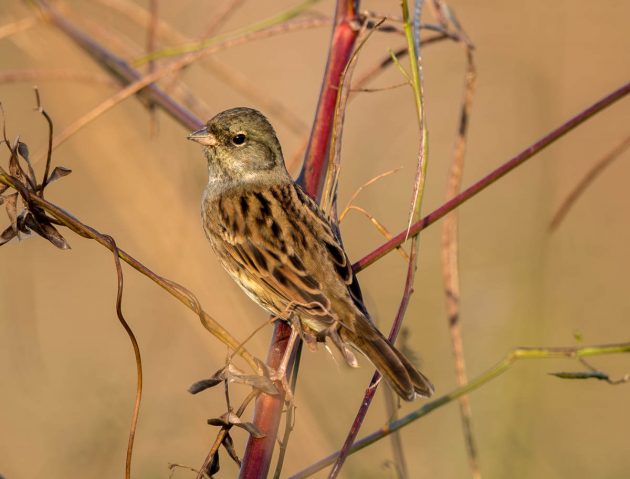
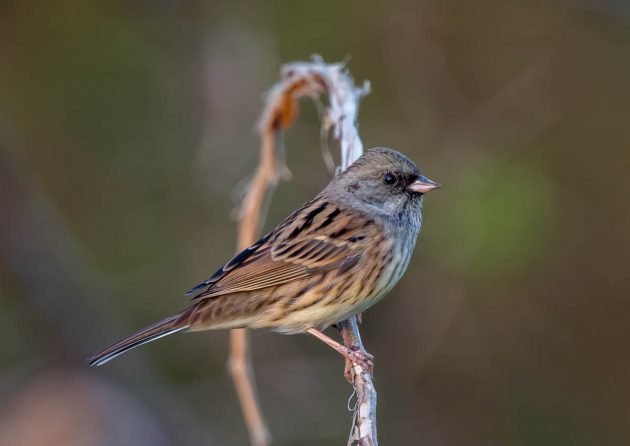
There are some other buntings at Nanhui in November – Little Bunting …
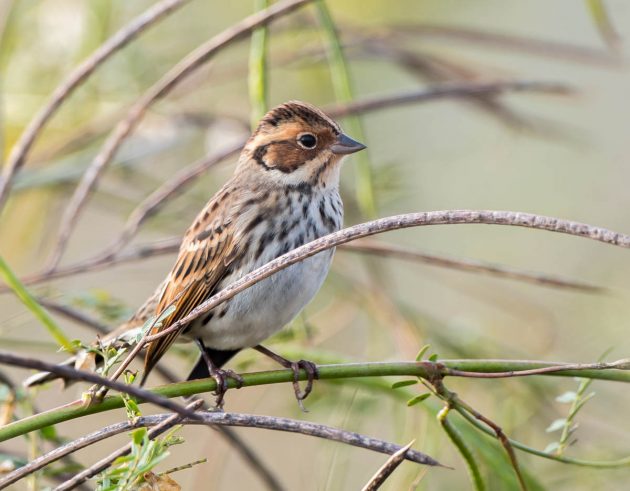
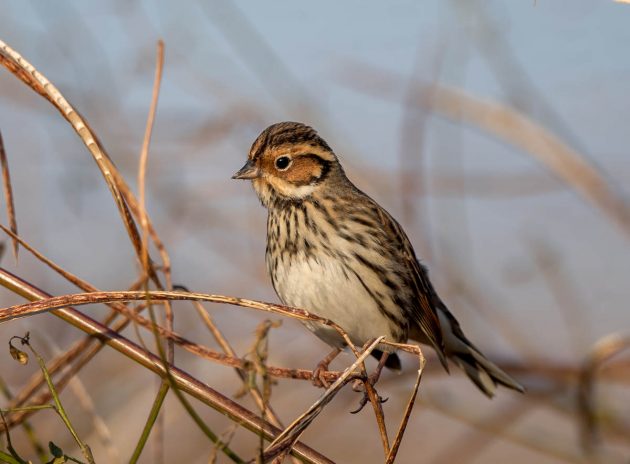
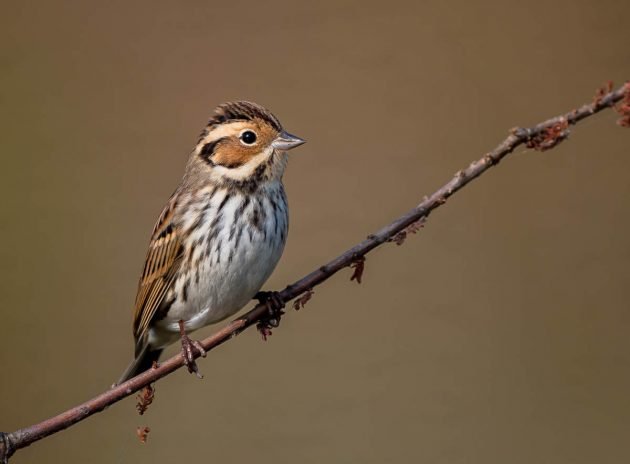
… Yellow-throated Bunting …
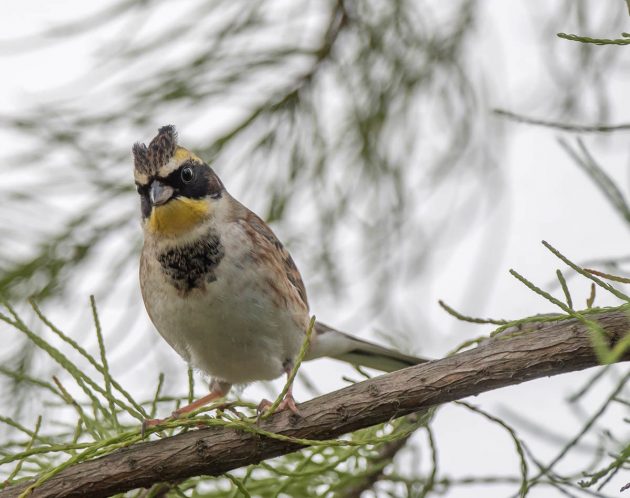
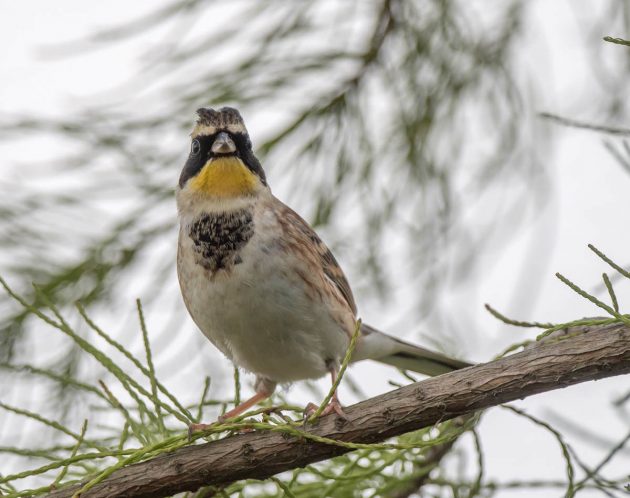
… and Pallas Bunting, the one that is the most common one in the reeds of Nanhui throughout the winter.
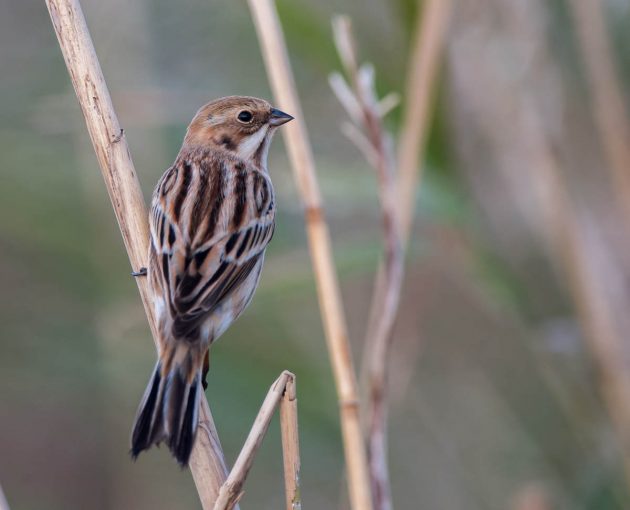
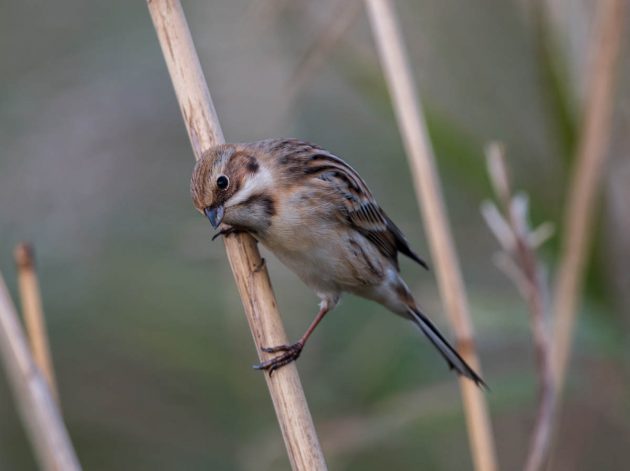
In about half of the photos I take of Nanhui’s Black-faced Spoonbills, they seem to be laughing or at least smiling, despite being seriously threatened as well (status: endangered). It seems they take their looming extinction lightly. Oxycontin is not a big issue here at Nanhui, so the reason may be different.
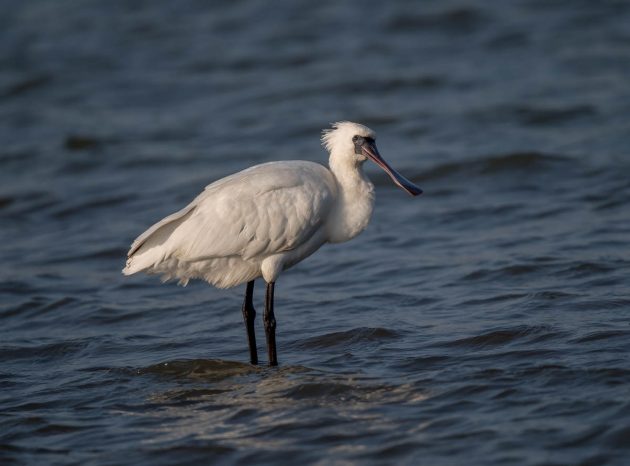
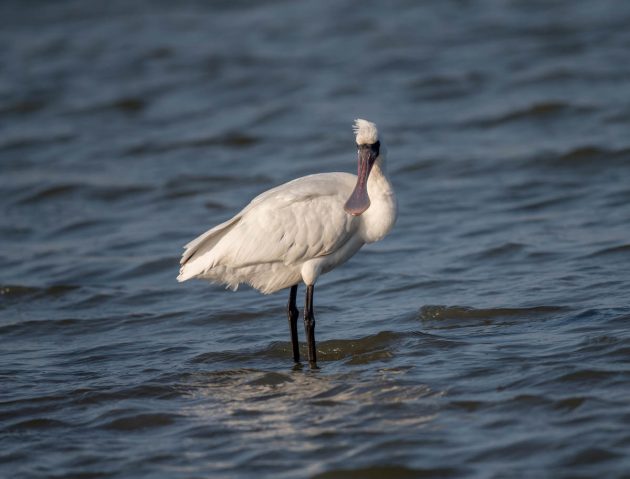
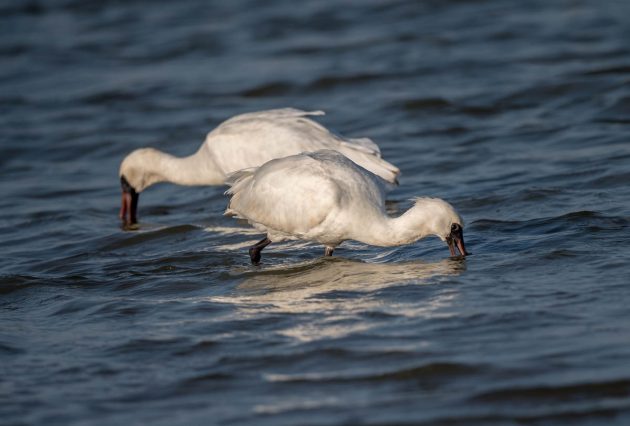
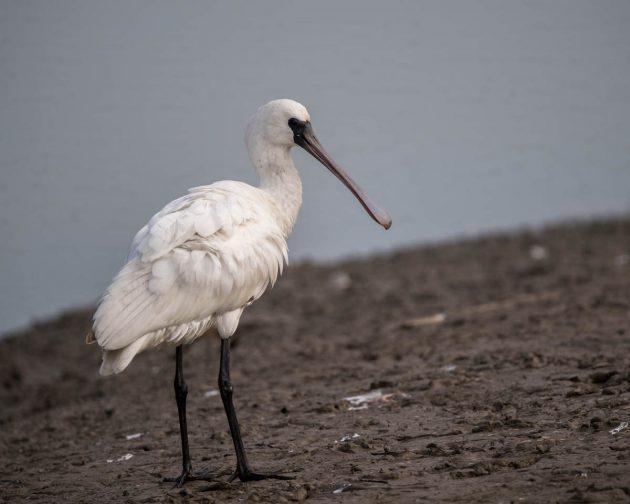
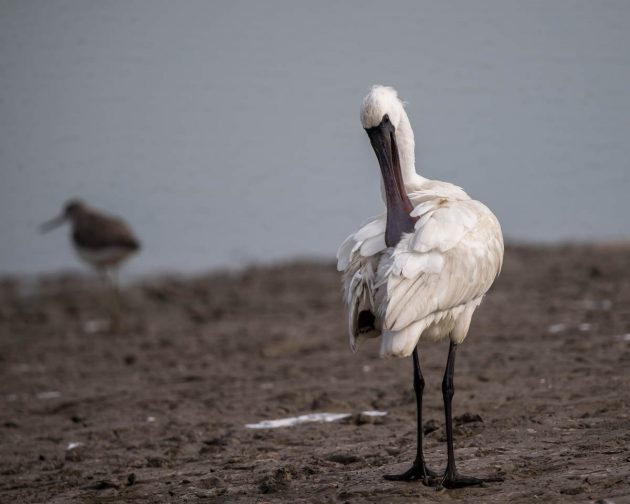
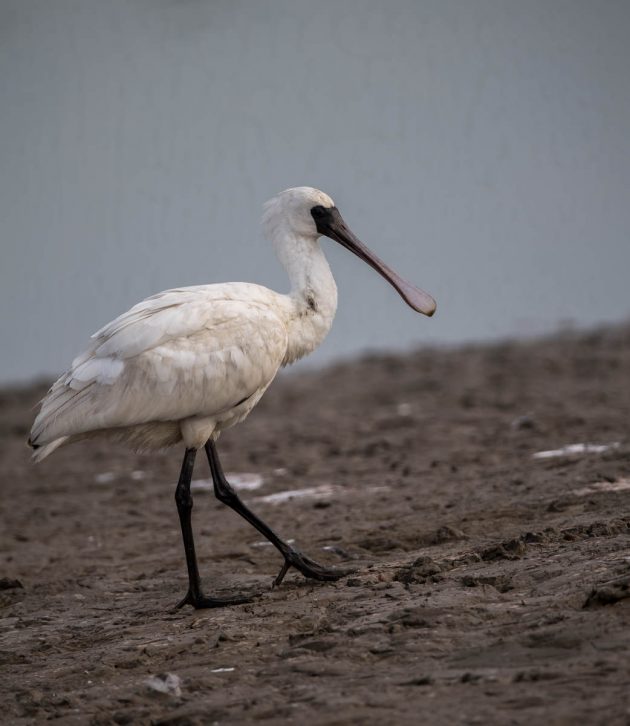
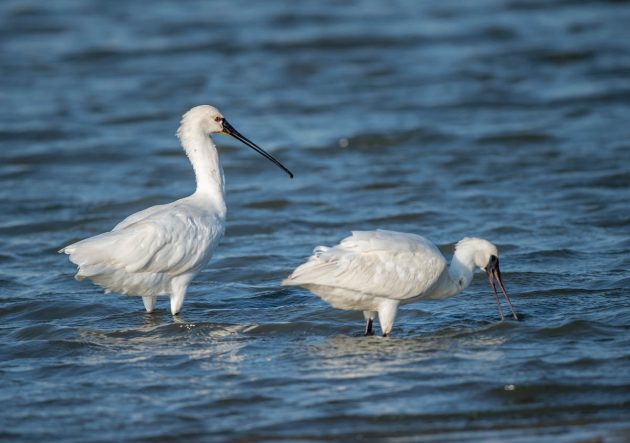
Usually, there are a few Eurasian Spoonbills keeping them company, though they tend to be in the minority here at Nanhui.
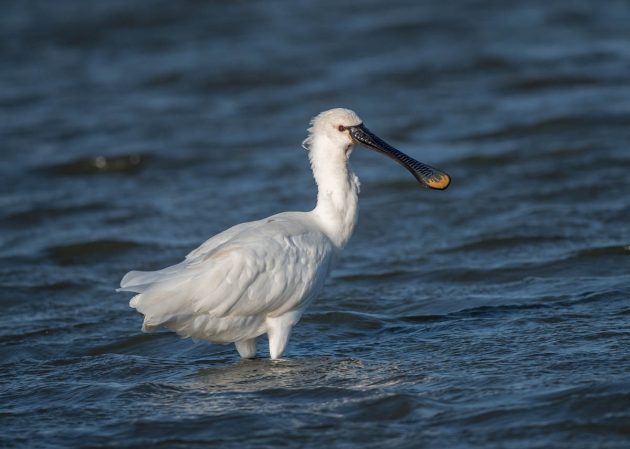
No, I will not stop showing photos of Daurian Redstarts. They are just too attractive.
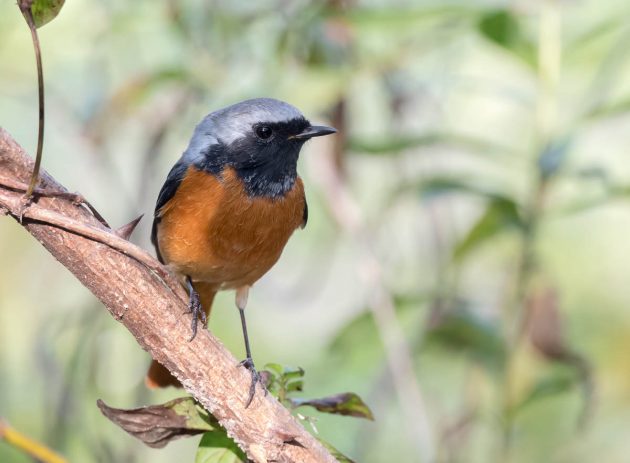
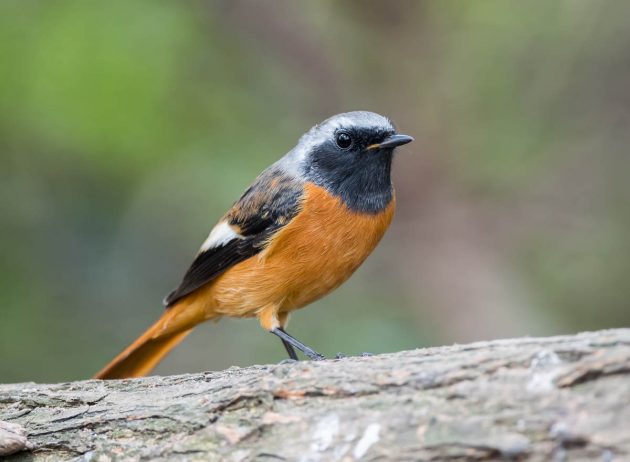
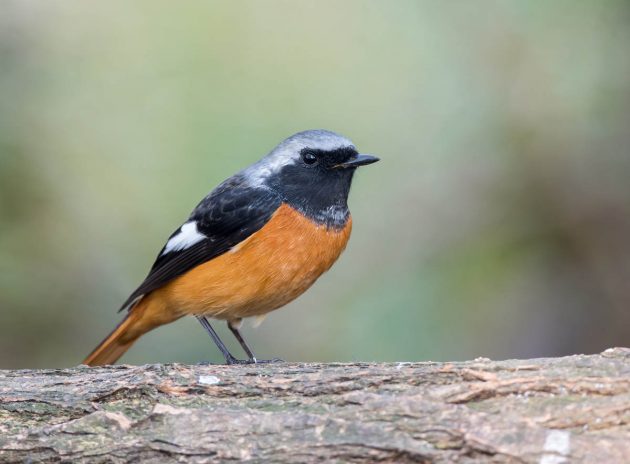
The females have some problems with their hairstyle when the wind is strong.
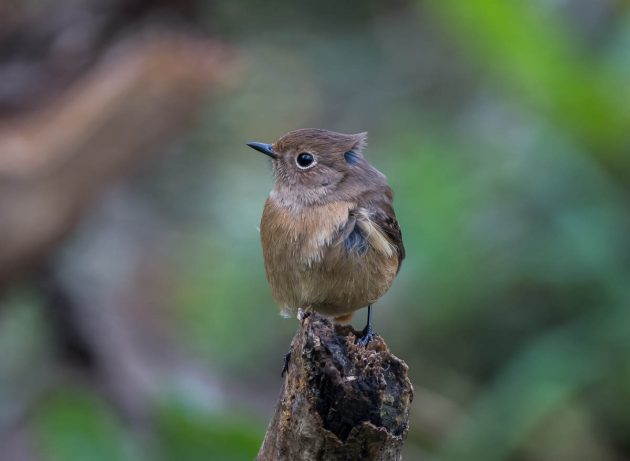
Bramblings at Nanhui enjoy staring vacantly into space …
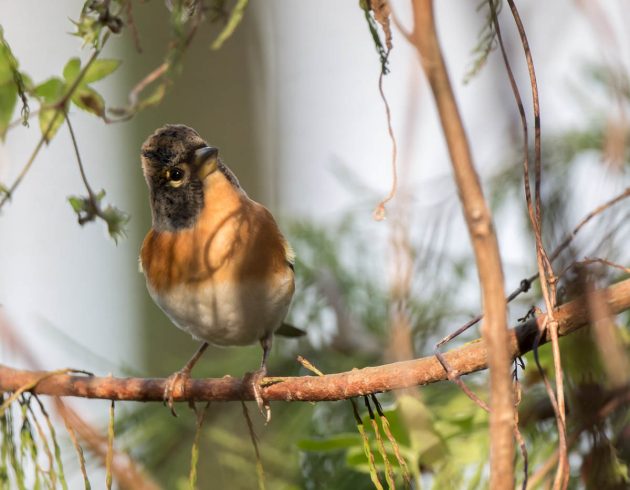
… and accusing bird watchers of not paying enough attention to them.
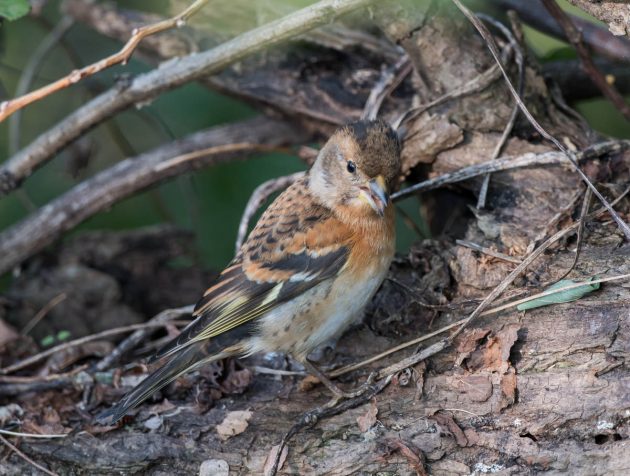
If Dunlins watch “The Life of Brian”, specifically the scene about “all being individuals”, will they think it is funny?
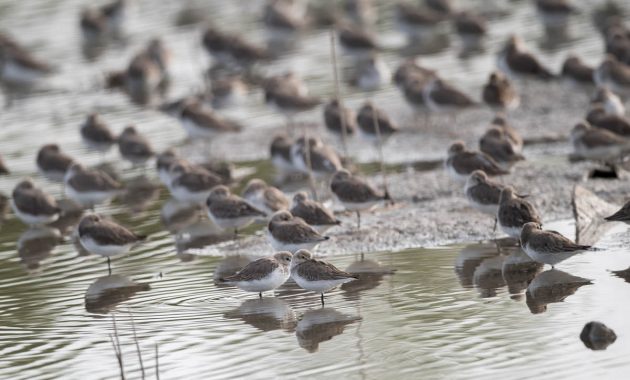
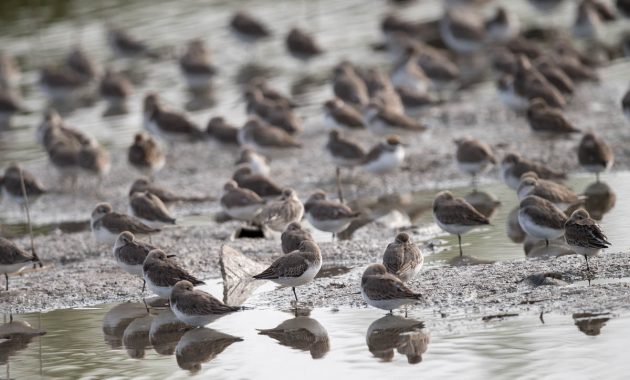
Grey Herons are much less concerned about this. Occasionally, some of them are considering emigrating to the US, where – after getting a Green Card – they become Great Blue Herons. Color changes indeed.
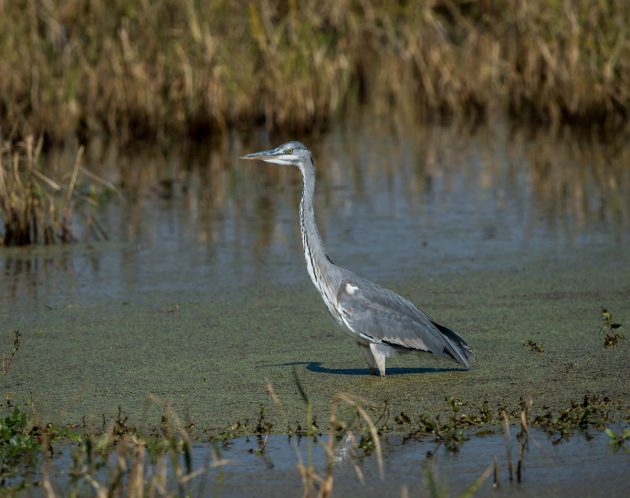
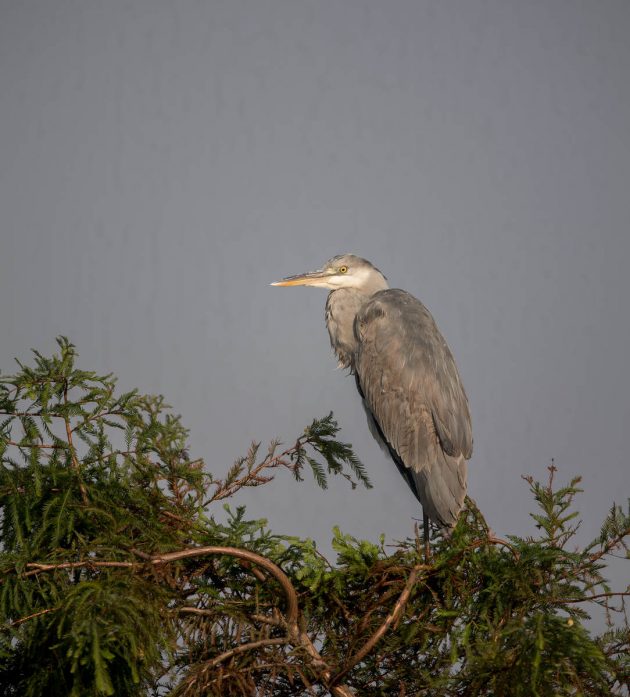
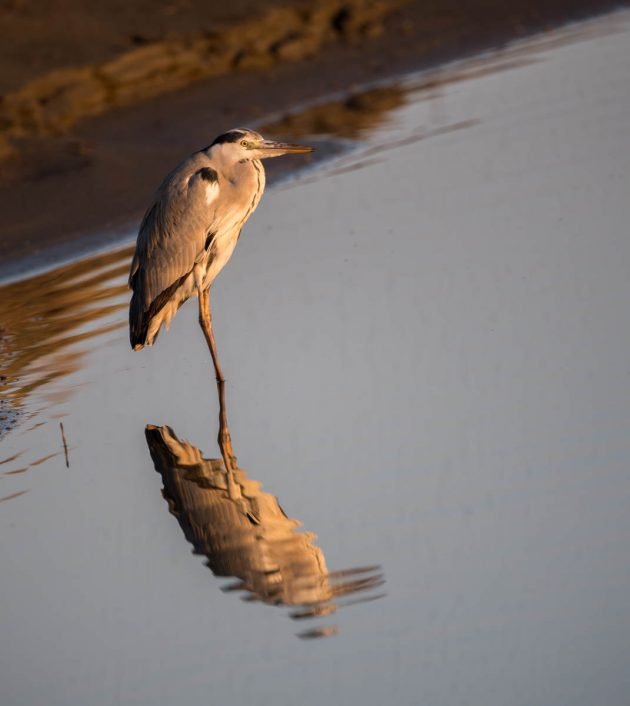
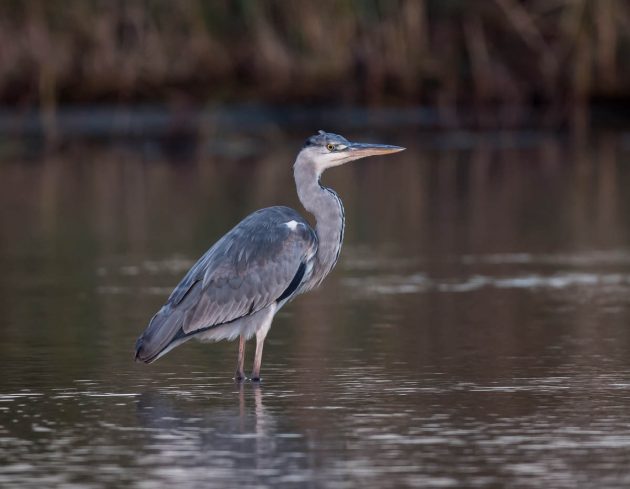
It seems that this year, at least one Greater Scaup is using Nanhui as a wintering ground. Apparently, there are no Lesser Scaup around here, so even I can be fairly confident to get this species identification right.
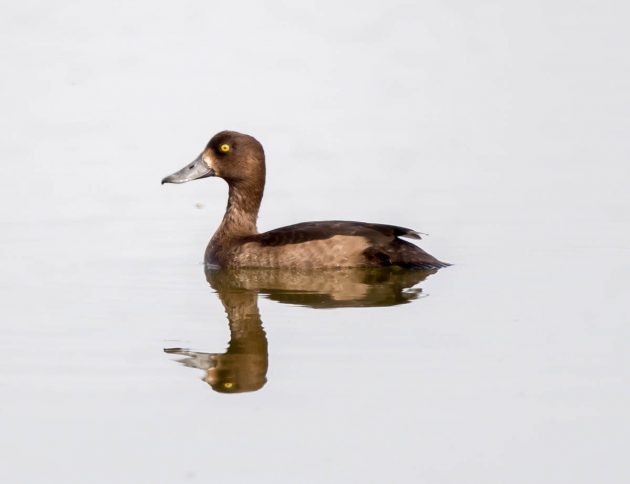
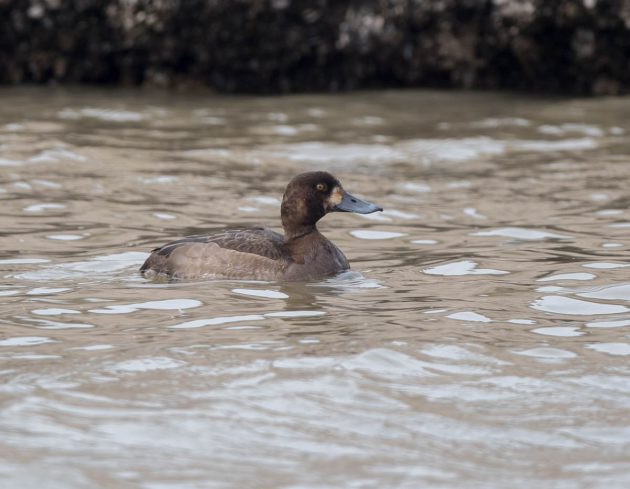
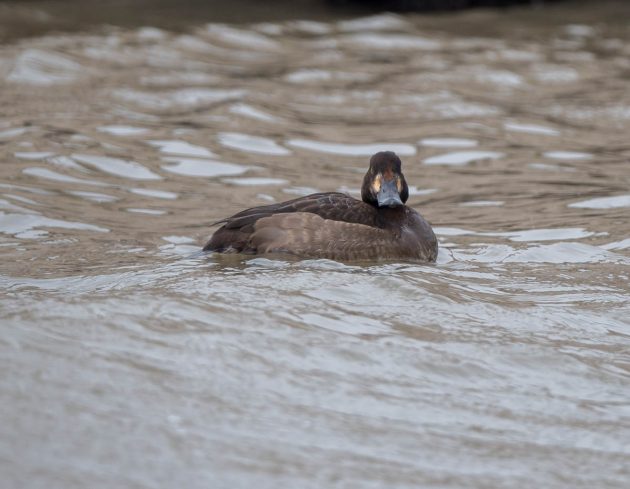
I was hoping to see a Siberian Rubythroat, as it is a beautiful bird and I had not seen one this season yet. The gods with their slightly weird sense of humor granted me my wish – I guess I should have specified I wanted to see a male.

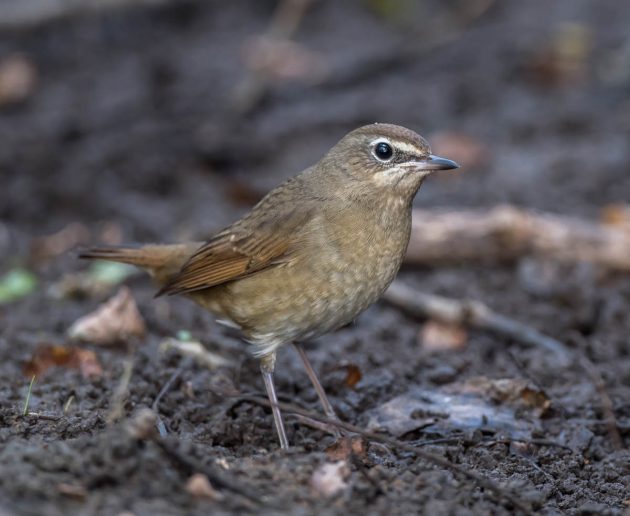
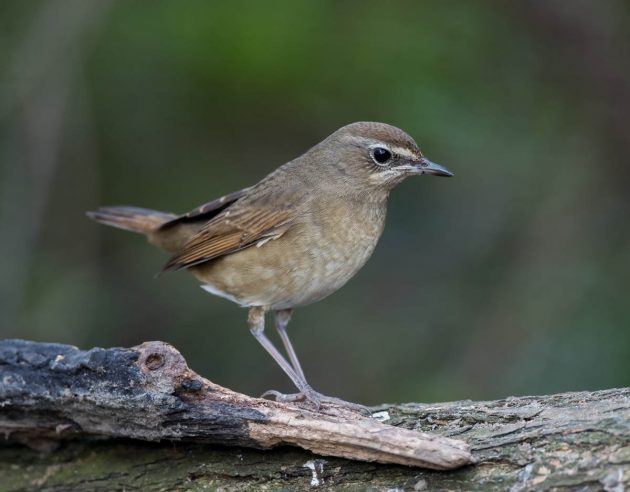
It is a fairly common bird but I am still delighted every time I see the puzzled face of a White’s Thrush.
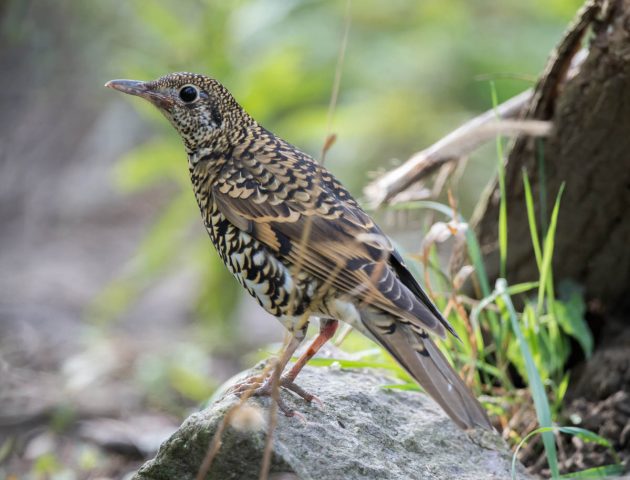
Given that many Chinese do not hold Japan in very high regard, it makes sense that the Chinese name of the Japanese Thrush is Wuhuidong, “Black Grey Thrush”. Though this does not quite seem to capture the beauty of this species, making it sound rather bland.
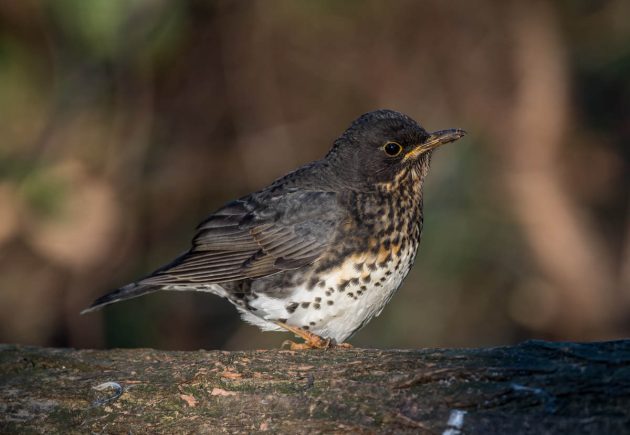
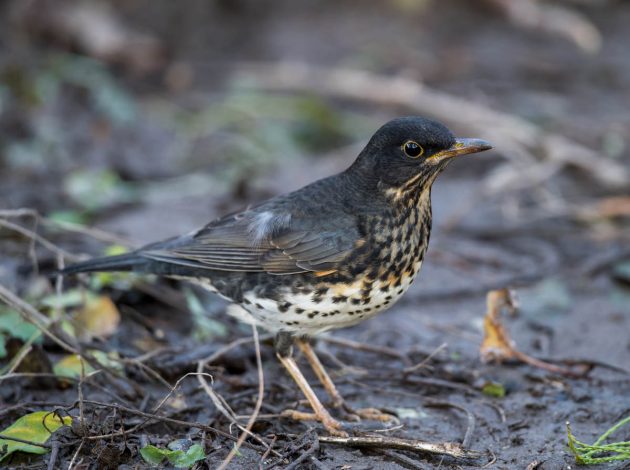
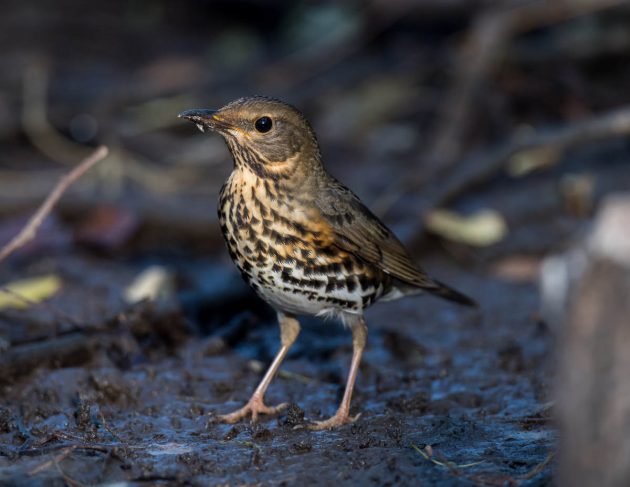
However, if blandness is your thing, why not enjoy watching some photos of a Pale Thrush?
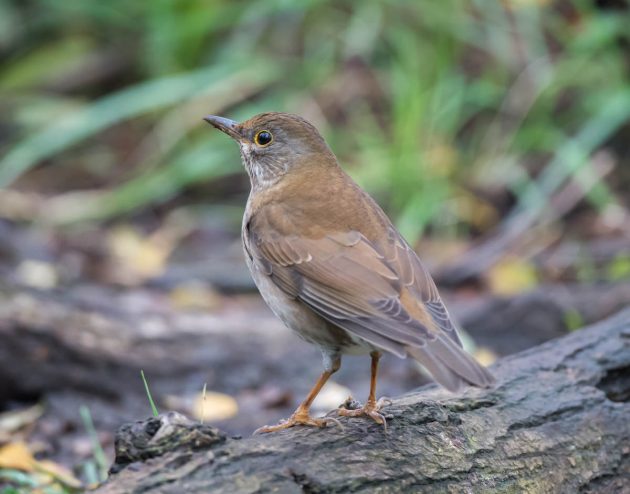
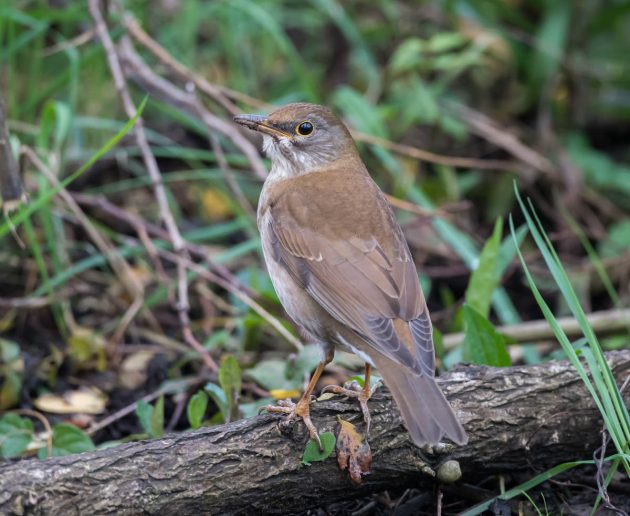
The Eyebrowed Thrush looks a bit more interesting again.
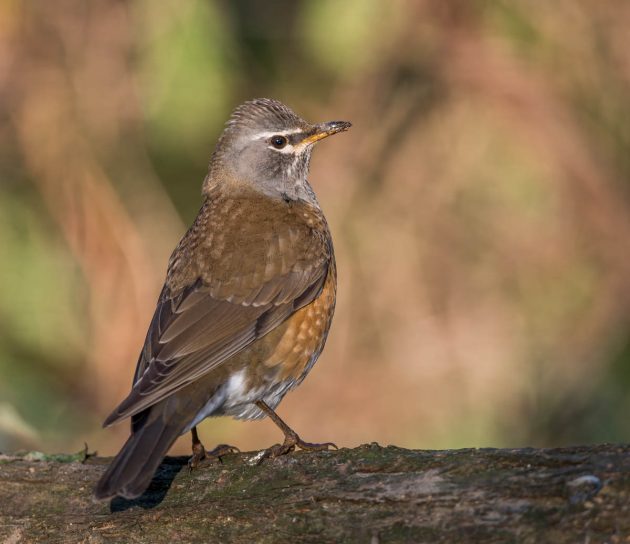
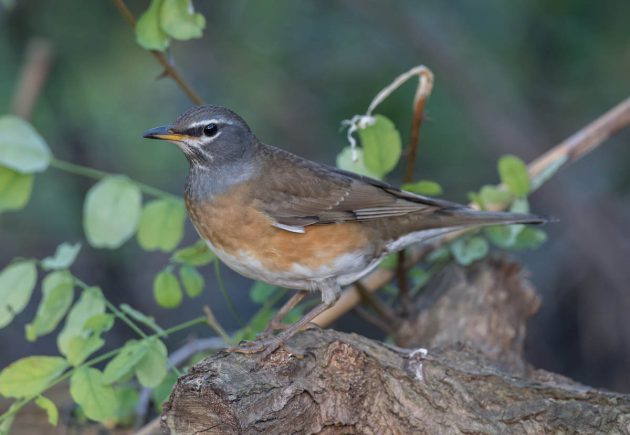
According to a scientific study that I just made up, Common Greenshanks use one leg to stand on in the daytime and the other one during the night. Shift-work.
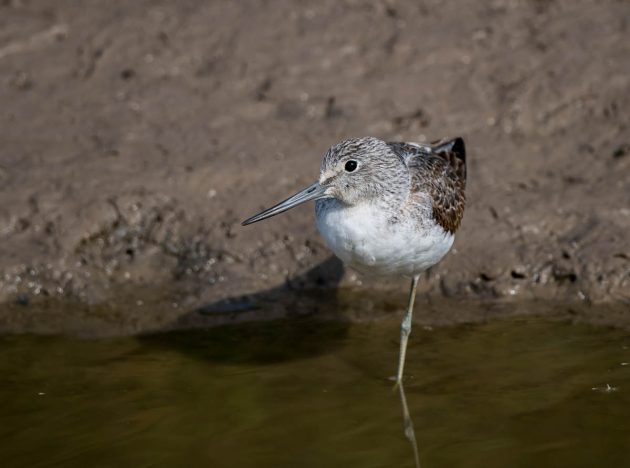
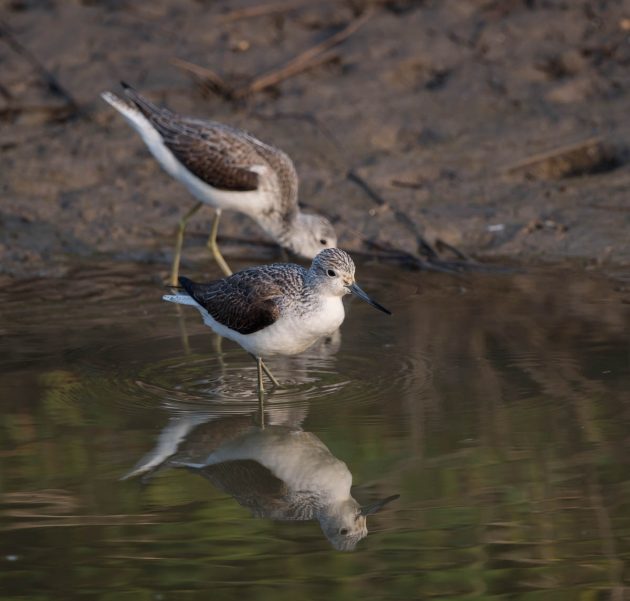
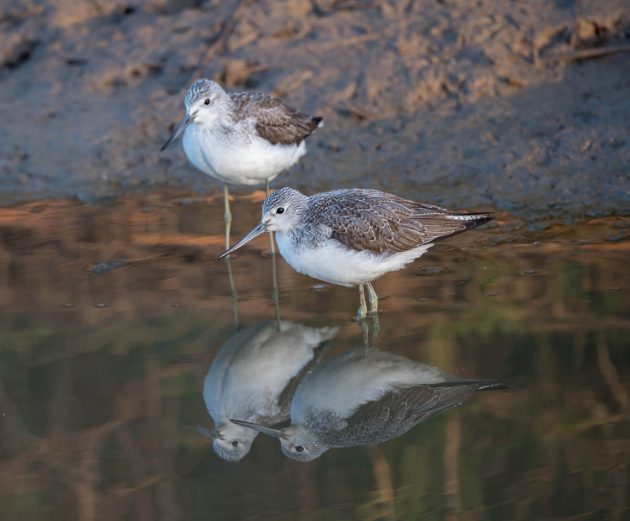
The Hair-crested Drongo has a few weird hairs sprouting from somewhere near the base of its beak. In an old man, such hairs coming out of the ears or nose would be considered extremely ugly. Somehow, for this bird it is ok. So unfair.
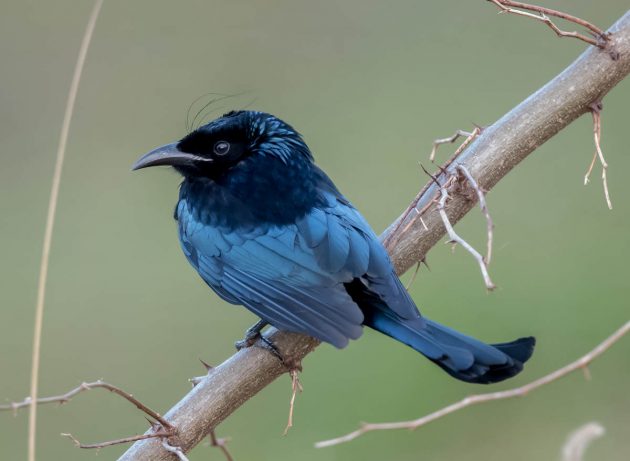
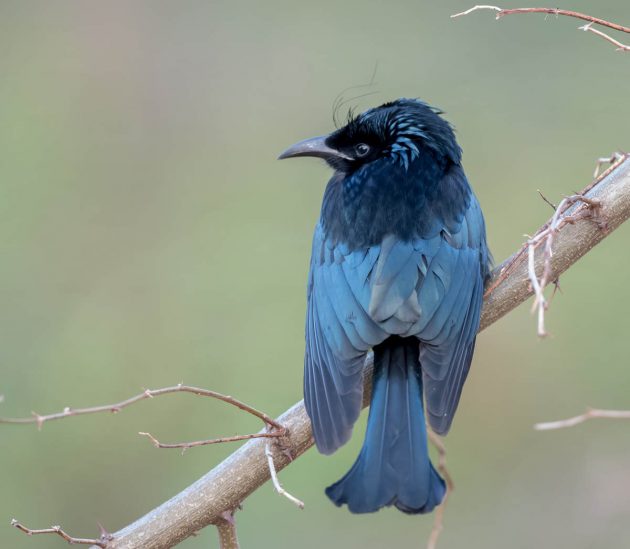
Japanese Tits have their own claim to fame – they are the first wild animal species with experimental evidence for compositional syntax. They also look fairly cute.
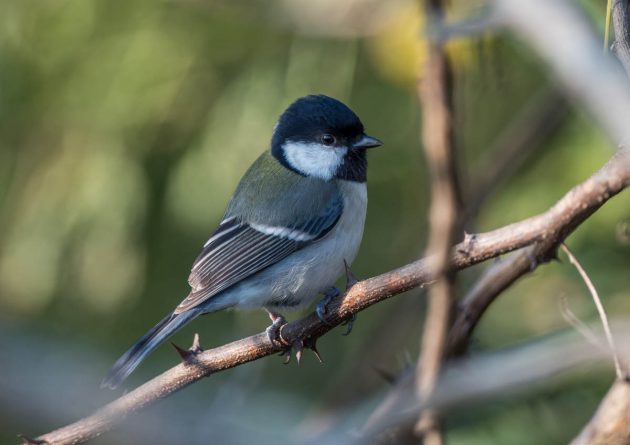
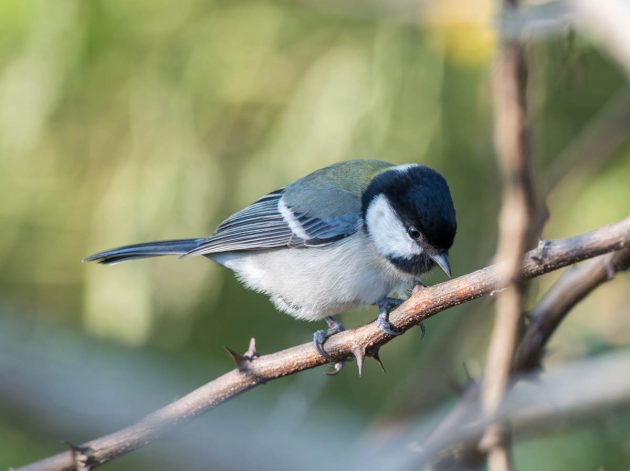
The Northern Lapwing is Near Threatened. It seems to have a hard time deciding its plumage is greenish or black. I am always a bit weirded out by these Latin double names – Vanellus vanellus in this case. Apparently (Wikipedia), the name “vanellus” is Latin for “little fan”, vanellus being the diminutive of vannus (“winnowing fan”. a reference to the sound lapwings’ wings make in flight. Can’t say I heard this though.
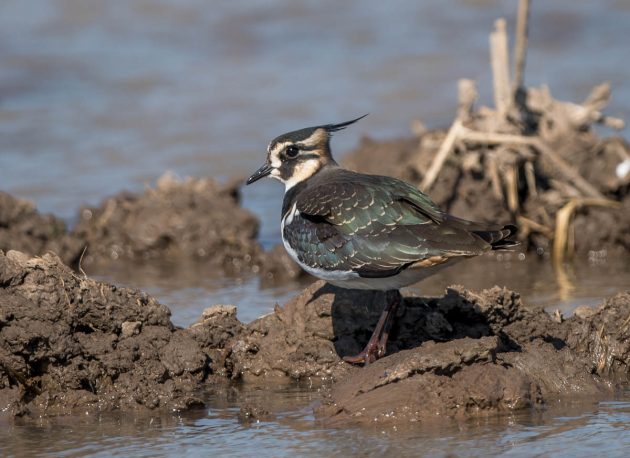
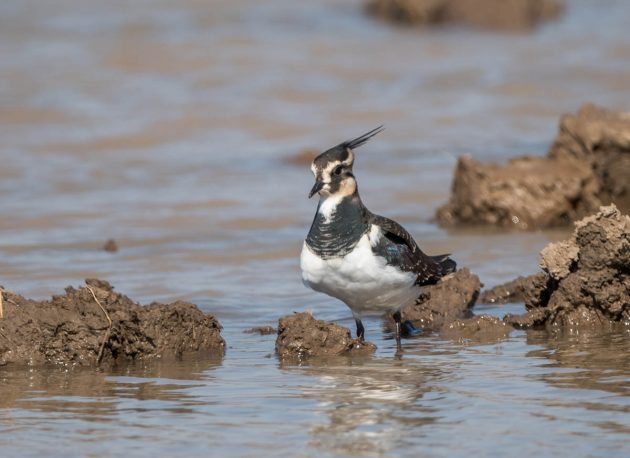
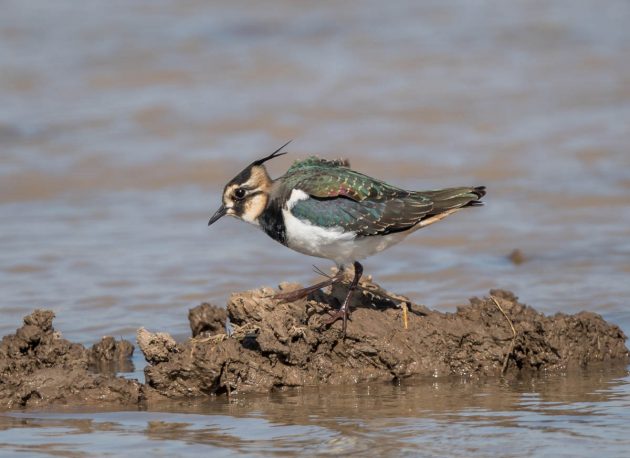
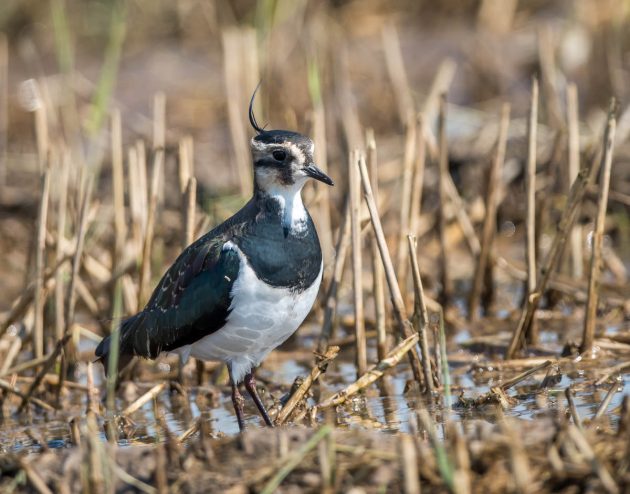
In case the local government needs further incentives to protect Nanhui, Oriental Storks are also listed as endangered. According to the HBW, they mainly eat fish. This individual seems to have studied the HBW extensively.
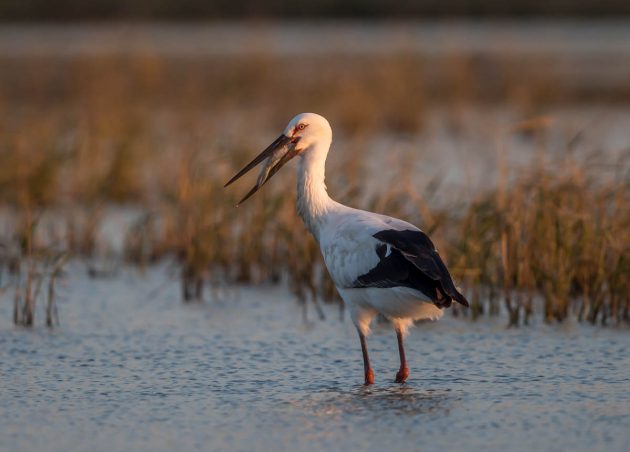
November was also a time for me to reconnect with our local poster species, the Reed Parrotbill. Somehow, there are still a few of them around despite the massive (and massively misguided) “trees for reeds” program of the local government.
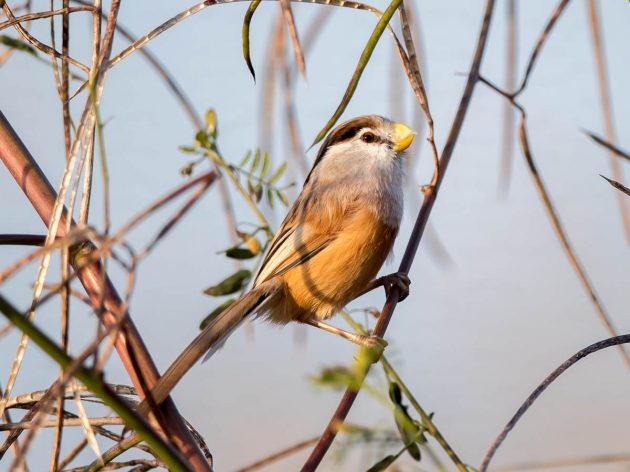
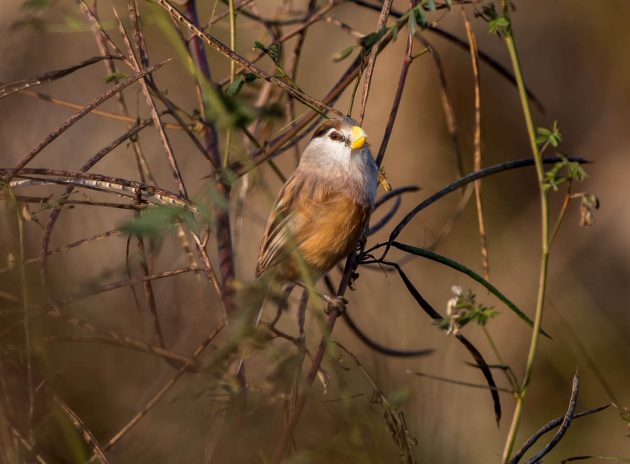
If I had any knowledge in plant identification, I could probably easily tell you what these Chinese Grosbeaks are eating.
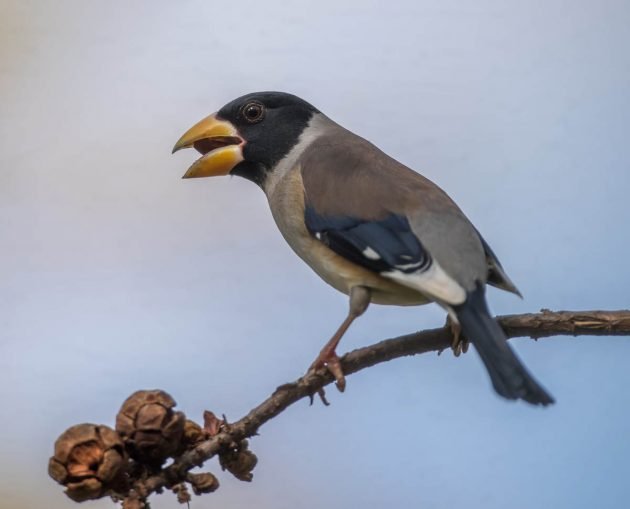
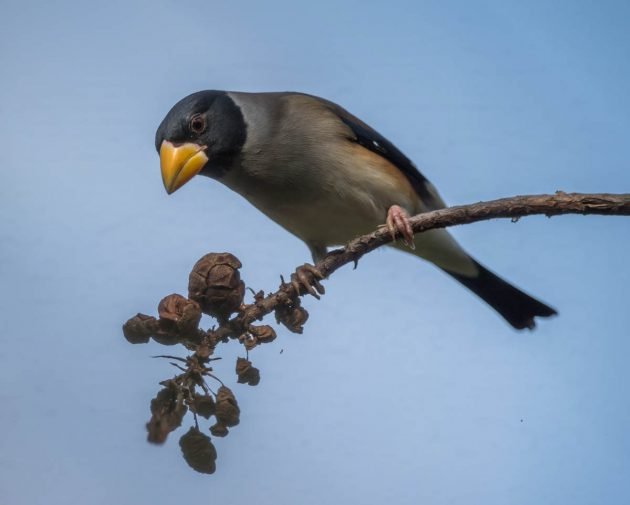
Looking at the photos of the Chinese Grosbeak shown above, I was struck by how closely it resembles the Hawfinch which I also saw at Nanhui in November. And indeed, it seems this is no coincidence, with Wikipedia stating that the hawfinch is “the only species placed in the genus Coccothraustes. Its closest living relatives are the Chinese and the Japanese grosbeak of East Asia”. The main difference is that I have seen the hawfinch – but only the hawfinch – in both my parents’ garden in Germany and in Shanghai.
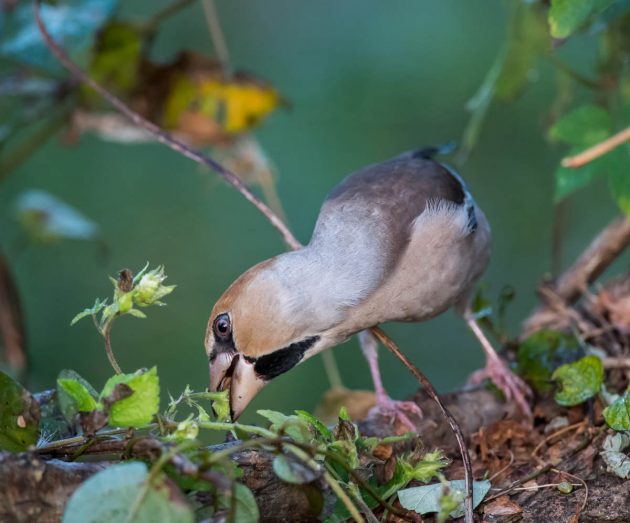
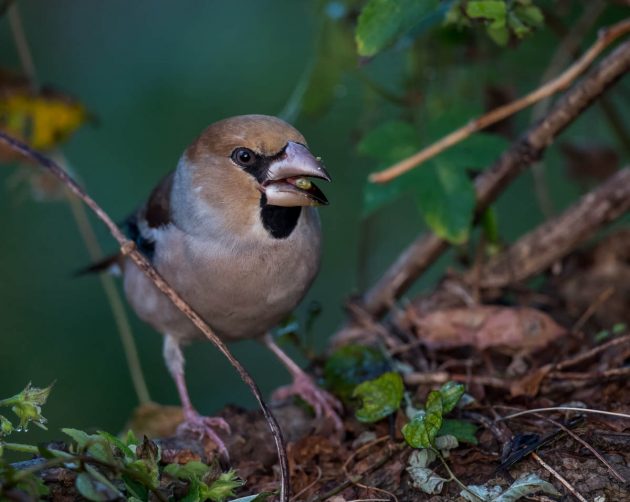
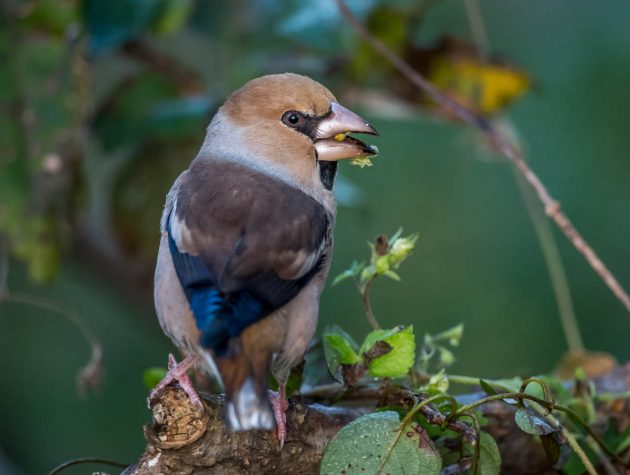
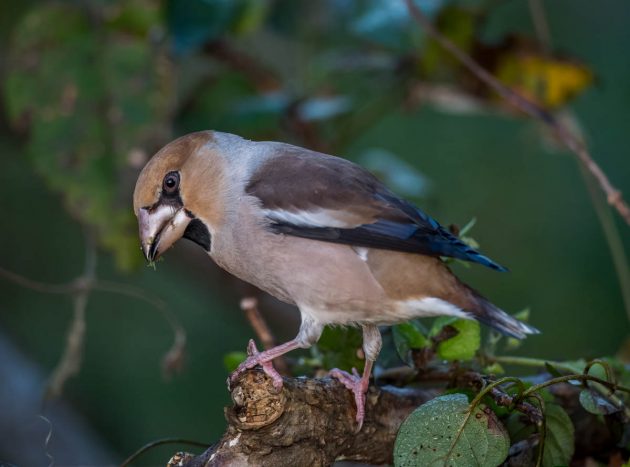
Great Cormorants can immerse into the water much more deeply than ducks, as their feathers are not waterproof …
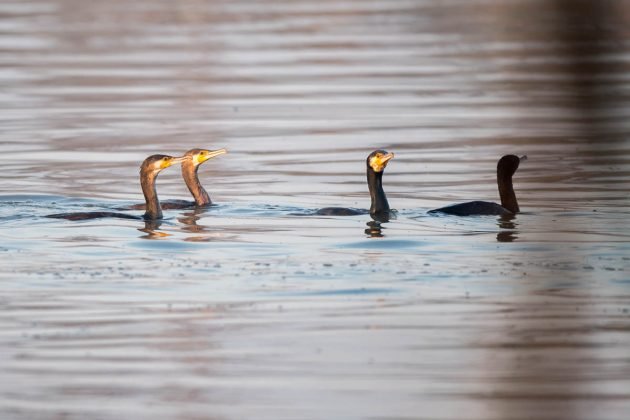
… but unfortunately, that requires some feather drying time afterward, which looks kind of stupid (yes, it is kid’s science hour at Kai’s bird blog …)
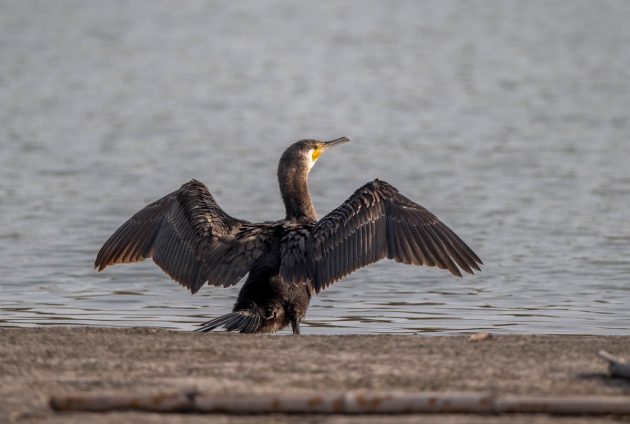
Great Cormorants are also very good at just loafing around. They have a lot of spare time as their fishing technique is very efficient.
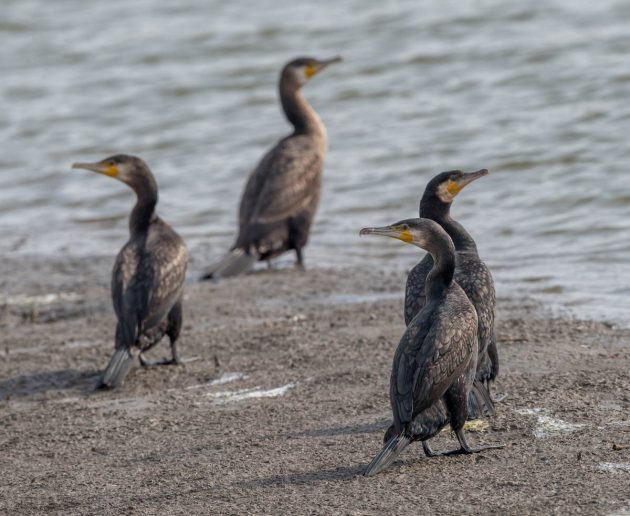
Sometimes they amuse themselves with short swimming races.
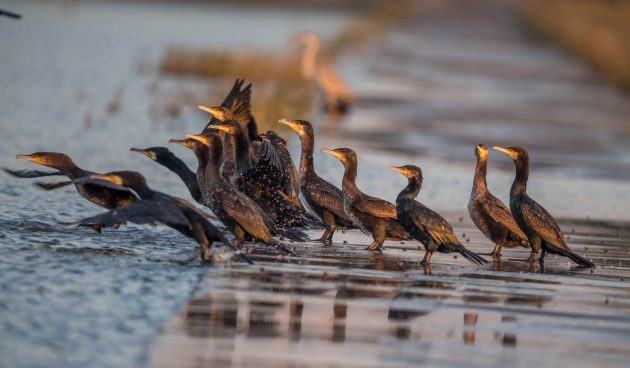
A note in the breeding section of the HBW indicates that the Spotted Redshank is a rather modern bird: “Monogamous, but pair-bond typically very short-lived”. If they were humans, the term to use would presumably be “serial monogamy”, a term that for some kind of reason I find rather amusing.
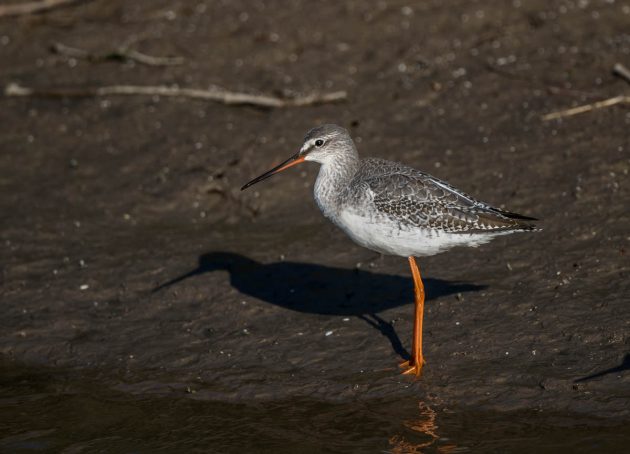
An Eastern Buzzard had goose for lunch. Or duck?
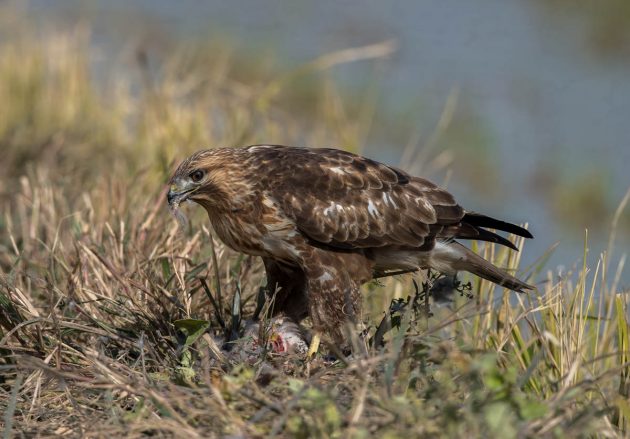
When not munching, they can look quite majestic.
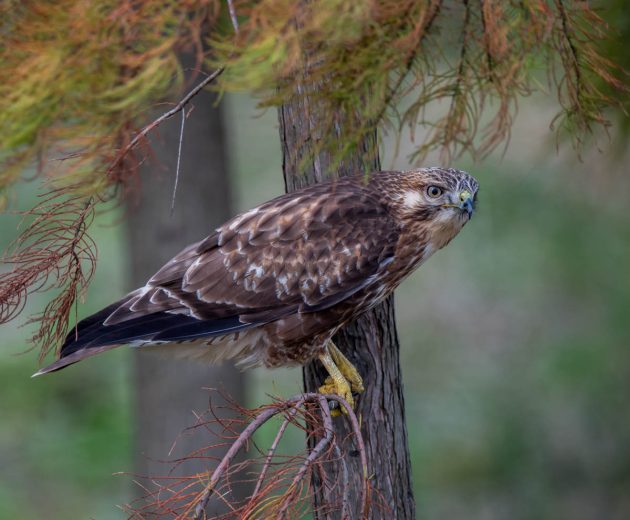
An Eastern Marsh Harrier seemed to watch the feasting buzzard quite enviously. Of course, he could not care less about the majestic look of the buzzard, probably thinking it is a bit of a show-off.
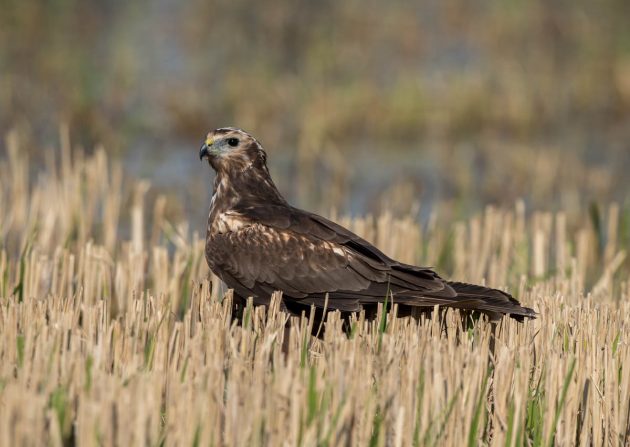
Common Kestrels probably rank even lower in the unofficial hierarchy of birds of prey.
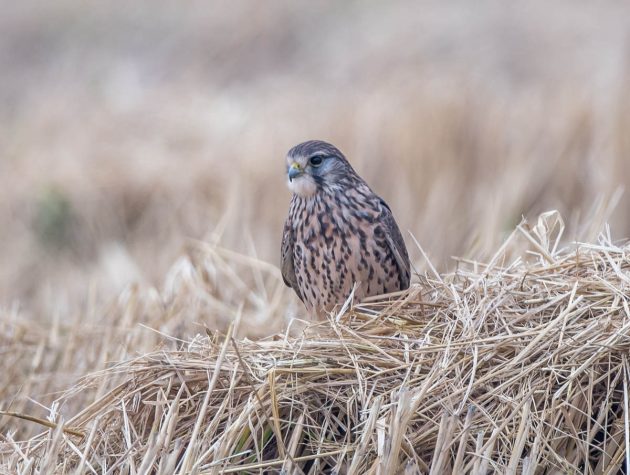
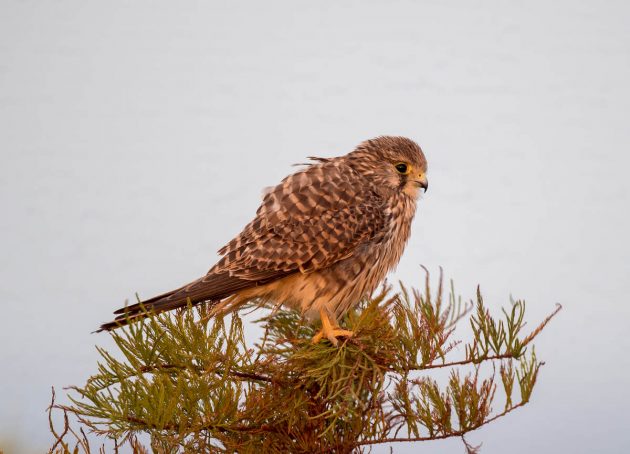
Nobody does cone-shaped better than this kestrel.
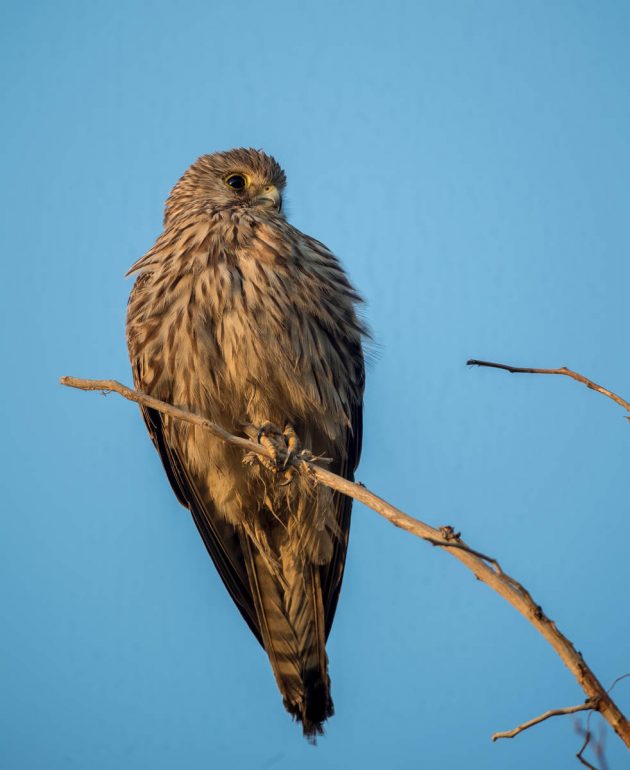
Red-flanked Bluetails are quite common in Shanghai in winter, but birds in the proper male plumage are harder to see.
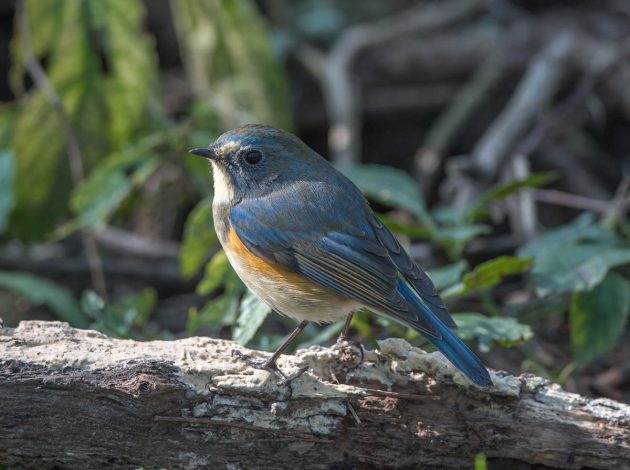
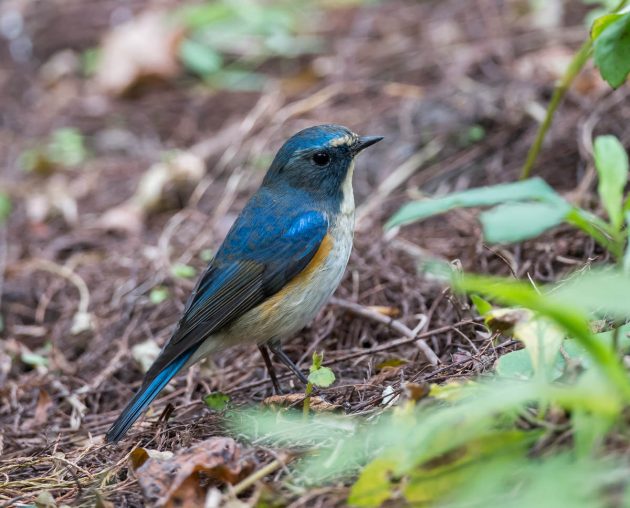
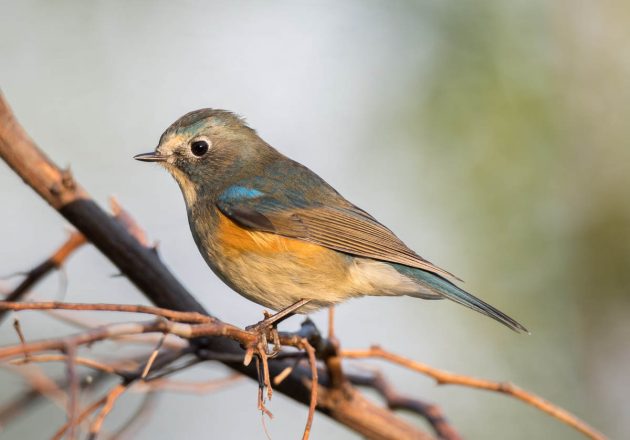
Pied Avocets seem to have paid a rather large amount of money to eBird, in return getting a gushing review: “Striking and essentially unmistakable, with elegant shape, boldly pied plumage, long bluish-gray legs, and long, slender, upcurved bill.” More interestingly, eBird also notes that the bill of the female bird is more strongly curved – an example of resource participation, I guess.
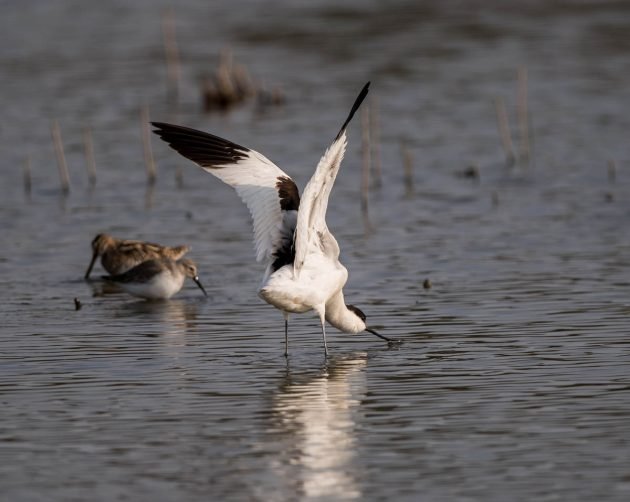
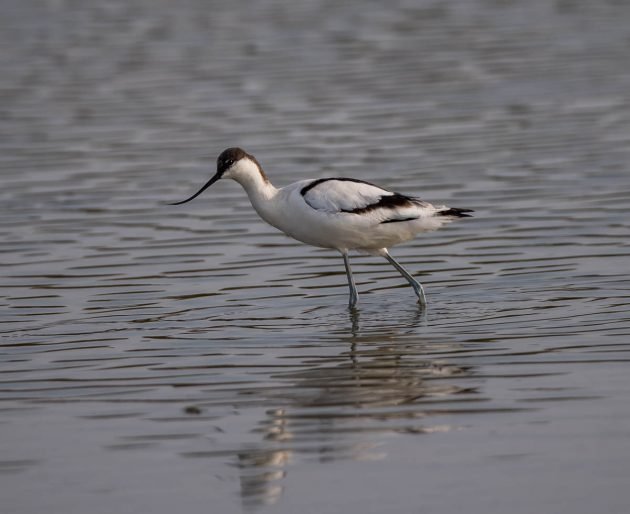
Not sure which one of these is male or female, though.
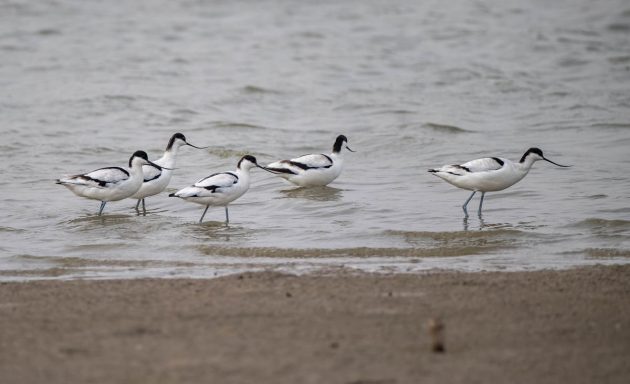
Finally, according to their Chinese name, Wharbling White-Eyes have embroidered eyes. And indeed the white ring around the eye looks like it has been stitched with a fine needle.
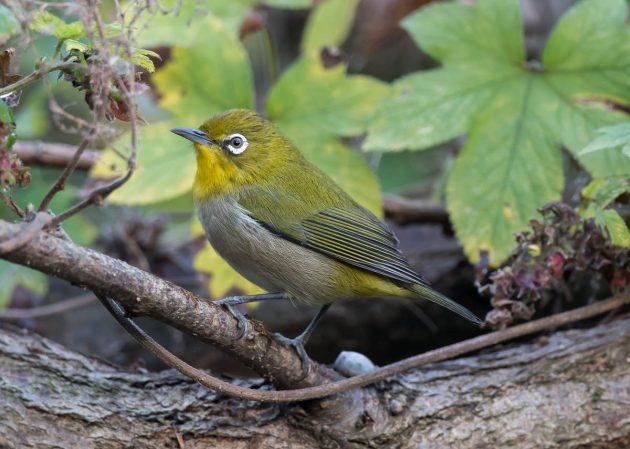
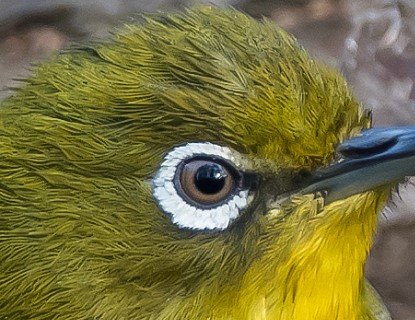













Congratulations, Kai! Both oriental stork and black-faced spoonbill in one day is pretty good! Also congratulations on the fantastic yellow-breasted bunting images!
An amazing collection of photos! It is always so fascinating to see birds from another part of the world. The Sparrowhawk photos look like paintings, so beautiful. The buntings are all great, especially love the Little Bunting, and they all appear to enjoy posing for the camera. There was something quite fetching about the Rubythroat female with her white supercilium and mustache, I do hope you get to see the male and get a photo to share with us. The Bluetail is stunning.
A veritable bunting spectacular. You have brought out their colours so well. And so nice to see so many familiar Shanghai birds looking better even than they do in real life. I well remember being dazzled by first sighting of a Daurianredstart almost 8 years ago.
Kai, you have outdone yourself with this fantastic post! As always, your photos are stunners and your commentary is terrific (the Norwegian fisherman’s sweater reference was so apt and made me laugh!). The first photo of the Eurasian Sparrowhawk really ought to be entered into a photography competition. The whole composition of that photo is superb. I was sorry to read about the trapping of Buntings. Thank you for such an interesting post.
Thanks for this! Do you think Nanhui will continue to be the best place for a visiting birder with restricted time, or is the tree-planting so extensive that the birds are gone?
Rick, it will mainly depend on whether the microforests will survive – at the moment, Nanhui is probably still worth a visit, particularly during migration season. The tree planting is not really the main issue as there are still some reed areas left …